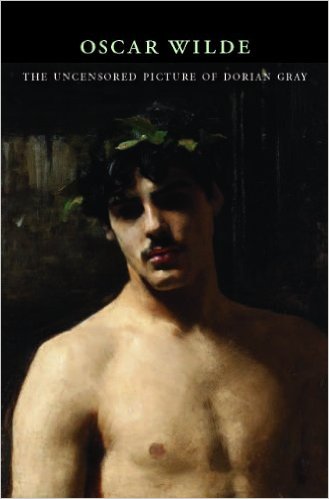When Oscar Wilde first sent his only novel to be published in Lippincott’s Monthly Magazine in 1890, he never could have guessed that the public outcry against his work would eventually land him in an English prison on the charges of gross indecency. “The Picture of Dorian Gray” went on to challenge the very strict morality of the Victorian Era. Among many references to sexuality, literary critics and the general public felt most threatened by its subtle homoerotic language; Wilde’s editors immediately set to work getting rid of any language that the public might find offensive.
When Nicholas Frankel set out to make an uncensored version available to the public, he wanted to celebrate Wilde’s only novel in the way the author had wanted it to be published. Scholars agree that it was unlikely that Wilde was notified of the changes to his novel before the censored version was published.
Frankel says in the textual introduction “Although some scholars have argued that the twenty-chapter version of 1891 represents the greater artistic achievement, most now accept that when Wilde revised and expanded the novel, many of the changes he made were…‘dictated by expediency and not by artistic considerations’.”
Though what editors in the late 1800’s considered necessary to edit would be laughably modest in the 21st century, the changes demonstrate how much cultural views have changed over a century. Chief among the taboo is references to homosexual relationships between the main character, a young man named Dorian, and several older men Wilde himself has been noted confessing the autobiographical elements of the novel.
“The Picture of Dorian Gray” is more than just a tabloid scandal, however. The novel questions whether or not beauty and perception are an accurate portrayal of truth, while also leaving the reader questioning the human and moral cost of pursuing pleasure. The main character, a beautiful and innocent young man named Dorian, inadvertently is granted his wish for eternal youth while he is having his portrait painted. The picture then begins to change, becoming a record of Dorian’s actions while his own features remain unmarred.
For those who have read the original “Picture of Dorian Gray”, the uncensored version will serve as an interesting comparison between modern values and those of the Victorian era, perhaps also giving a glance into Wilde’s secret double life. For those who are unfamiliar with Wilde’s only published novel, “The Picture of Dorian Gray” is a unique perspective on life in the Victorian era. The psychological study of Dorian as he matures shows a man brought down by his own virtues, and raises the question of whether or not temptation can be resisted when there will be no evidence of corruption.









